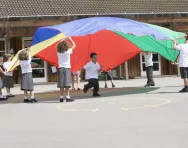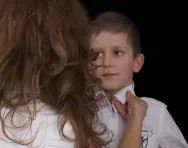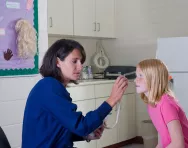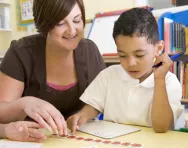TheSchoolRun.com closure date
As we informed you a few months ago, TheSchoolRun has had to make the difficult decision to close due to financial pressures and the company has now ceased trading. We had hoped to keep our content available through a partnership with another educational provider, but this provider has since withdrawn from the agreement.
As a result, we now have to permanently close TheSchoolRun.com. However, to give subscribers time to download any content they’d like to keep, we will keep the website open until 31st July 2025. After this date, the site will be taken down and there will be no further access to any resources. We strongly encourage you to download and save any resources you think you may want to use in the future.
In particular, we suggest downloading:
- Learning packs
- All the worksheets from the 11+ programme, if you are following this with your child
- Complete Learning Journey programmes (the packs below include all 40 worksheets for each programme)
You should already have received 16 primary school eBooks (worth £108.84) to download and keep. If you haven’t received these, please contact us at [email protected] before 31st July 2025, and we will send them to you.
We are very sorry that there is no way to continue offering access to resources and sincerely apologise for the inconvenience caused.
Managing migraines in primary schools
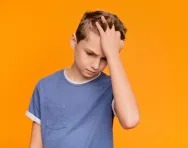
Everyone gets headaches from time to time, and children are no exception. But while mild, occasional headaches are a part of normal life, some people are afflicted by migraines – and these can be a lot more debilitating.
People often assume that migraine is an adult complaint, but one in 10 children is also affected, and it typically strikes before their 12th birthday, meaning a considerable number of primary school kids are living with migraine.
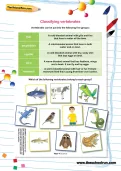

Download fantastic science resources today!
- Experiments And Science Fun pack
- Science Learning Programme for each school year
- All the instructions, questions and information you need
‘A lot of people who had migraines as children say it took years to be taken seriously, so if your child says they’re getting pain in their head, don’t dismiss it,’ advises Una Farrell of the Migraine Trust.
Symptoms of migraine in children
Children may experience migraine differently from adults, so it’s not always obvious what’s wrong with them.
Signs to look out for include:
- Head pain that often affects the whole head, not just one side.
- Sudden attacks, with children often being in severe pain within 15 minutes.
- Typically shorter attacks, sometimes lasting under an hour, and often between two and four hours.
- Nausea and/or vomiting, at the same time as the headache or afterwards. Sometimes vomiting marks the end of an attack.
- Abdominal pain – sometimes without head pain. ‘This is known as an abdominal migraine, where the child has tummy pain that’s linked to migraine, and because there’s no headache, the signs are often missed,’ Una explains.
- Sensitivity to light and noise.
- Dizziness.
- Lack of energy.
- Aura: this affects about 10% of childhood migraine sufferers, with symptoms including visual or speech disturbances, feelings of tingling or numbness, dizziness and weak limbs. This often lasts up to an hour and often precedes the headache, although some children get aura on its own.
What causes migraine in children?
As with so many childhood conditions, it’s hard to pin down what causes a child to suffer from migraines.
‘We know that there’s a genetic link, so if as a parent you suffer from migraines, be aware that your child also might,’ says Una.
Some children develop migraines around the time of puberty, which suggests that hormones may play a part, too.
It’s also known that children who suffer from motion sickness are more likely to experience migraines.
However, the causes often remain unclear, which means your main focus should be on identifying what triggers your child’s migraines, and how you can help them through an attack.
Common migraine triggers
‘Migraine is a very individual condition, so different children will have different triggers,’ explains Una.
‘However, we do know that the migraine body is very sensitive to change, so if there are any disruptions to your child’s routine – even small ones – it could trigger a migraine.’
Some of the common triggers of migraine in children include:
Changes in sleep pattern, whether they’re getting more or less than usual. Try to stick to a regular routine with bedtimes and waking times, even at weekends and during the holidays.
Dehydration.
Food and diet. Some people find their migraines are triggered by particular foods, which they can then avoid. However, the causal link can be difficult to establish, as some children have a craving for a certain food before developing a migraine, which can mistakenly lead to you thinking that that food triggered the attack.
Lack of food. It’s best to eat little and often to prevent migraines.
Stress. In children, this could be caused by anything from school pressures (whether academic or social, such as bullying) to worries about things that are happening at home.
Sudden exercise, such as a burst of running. This can trigger an attack, but it’s important that your child doesn’t avoid exercise: it’s better to make exercise a part of their daily routine so their body gets used to it, while making sure they stay hydrated.
Screen time. Flicker and glare from TV, computer, tablet and phone screens can bring on migraines, so make sure your child takes frequent breaks.
Health. Children are often more prone to migraine if they’re generally unwell. Girls may also get them when they have their period.
Environmental factors like changes in weather, bright light, etc.
How are migraines diagnosed?
If you suspect your child is having migraines, start keeping a migraine diary that logs every attack, with information about possible triggers, how your child reacted, any treatment they were given, etc.
Your child could also keep their own migraine diary, writing or drawing how they felt before an attack. The Migraine Trust has a young sufferers' diary to download.
Remember that some children will experience abdominal migraines rather than headaches, and log every time they complain of tummy pain or nausea/vomiting.
The next step is to show the diary to your GP, who will advise how your child should be treated. This may be with over-the-counter medication like child paracetamol or ibuprofen, or with prescription medicines that are taken daily, at the first sign of a migraine, or during an attack.
‘Medications are more limited in children than in adults, but it’s still worth having a conversation about what to do,’ Una advises.
In extreme cases, your child might be referred to a neurologist for further assessment and treatment.
Helping your child cope with migraines at school
‘Suffering from migraines can have a huge impact on children’s school life,’ says Una.
‘They might need lots of time off school if they suffer from frequent migraines, and so miss out on schoolwork. Or they may be able to remain in the classroom, but be disorientated and not be able to participate fully, which can also lead to gaps in their learning.’
They may also struggle to do their homework if they’re having or recovering from a migraine.
Some children may become afraid to take part in certain activities, such as PE, because they’re worried about triggering an attack, or are reluctant to go on trips in case they have a migraine away from home.
‘While some schools are very understanding and helpful, others dismiss it as “just a headache” when in fact it’s something far more serious,’ Una explains.
The good news is that there’s plenty you can do to help your child’s school understand their migraines.
1. Speak to the staff
Arrange a meeting with your child’s teacher/headteacher and, ideally, the school nurse to discuss your child’s condition.
Give them as much information as possible about what triggers an attack, what (if anything) can prevent it if your child has early symptoms, how to treat them during an attack, if and when medications should be given, and how to help them recover.
It’s useful to put together an Individual Healthcare Plan that sets out all this information.
If your child is likely to need medication at school, establish who will be responsible for administering it. Bear in mind that schools are not legally obliged to give children medication, although most are happy to make accommodations.
2. Explain their triggers
Making sure the school understands your child’s triggers can help to prevent them having migraines at school.
For example, you might ask for permission for them to keep a water bottle on their desk (and for the teacher to make sure they drink from it regularly), or for them to be allowed a snack every couple of hours.
They may be able to sit near a window so they have fresh air, and need to have computer time limited to short periods.
3. Explain what to do if a migraine is coming on
In many cases, an incipient migraine can be prevented by the child having something to eat (or a sugary drink or glucose tablet, if they feel too sick to eat) and taking their medication, if their doctor has given them some.
4. Teach them how to manage during and after the attack
Different children need different things during and after a migraine. Some can remain in the classroom; others will need to leave the room to lie down until it has passed and then return to class; others need to go home.
‘Some schools will unnecessarily send children home every time they have a migraine, which can lead to a loss of learning, so if this isn’t usually necessary for your child, make sure they understand this,’ Una advises.
If your child is sick with migraines, you should also ask the school to waive the usual policy that states that children must stay off school for 48 hours after vomiting. This policy exists to prevent the spread of bugs, but as migraine vomiting is not caused by a virus, it’s unnecessary to exclude the child for this period.
5. Make sure they’re not excluded from activities
Under statutory Government guidance, children with medical conditions including migraine must be given the practical support they need to participate in all elements of school life.
Children should be supported to take part in activities like school trips with reasonable adjustments made: for example, a risk assessment might be conducted and a member of staff allocated to carry and administer your child’s medications, if needed.
6. Empower your child
It’s important your child understands about their condition and how to manage it in an age-appropriate way, as this will help ease their anxieties about having an attack at school.
The Migraine Trust's comprehensive information section helps young sufferers understand how migraine might affect them.
‘It’s a learning process for both you and your child, but it’s always best to be open about the condition with them, as this will help them feel more confident about looking after themselves,’ Una explains.
If you’re struggling to get your child’s school to understand their condition, the Migraine Trust has an advocacy service that can help you make your child’s needs known and the right support put in place.
